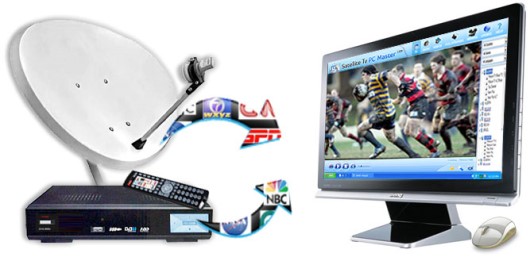Working out just how many pixels the average human eye can see is a herculean task of biology and maths, involving a lot of assumptions and generalizations.
However, various sources have attempted it in the past (one study estimates that human vision has a resolution of more than 576 megapixels), as well as looking to determine what display resolutions are most suitable for use on the devices people view on a daily basis.
When it comes to TV broadcasts, for many years most people were familiar with standard definition imagery. In the US this was the 480i system preferred by the National Television System Committee (NTSC), while countries in Europe using PAL would generally experience a 576i resolution when turning on their sets.
While standard definition was adequate for as long as it was the only option, the dawn of the high-definition (HD) age has rendered this older technology somewhat obsolete. So, while you can still cope with standard-definition (SD) broadcasts if you do not know what awaits you on the HD side of the street, crossing over briefly will leave you hooked and unable to settle for lower pixel counts.
Part of the reason for SD’s long lifespan was that broadcasters simply did not have the bandwidth in the analogue spectrum to output high-definition content. But with 1080p HD satellite TV, of the kind you can find via satellitetv.net, there are no longer limitations in place to prevent everyone from experiencing the best video quality around.
For the uninitiated, 1080p is the current HD standard that represents the pinnacle of what can be achieved with current broadcasting and home entertainment technology. Usually referred to as ‘full HD’, 1080p gives you a widescreen 16:9 aspect ratio with a total 1920×1080 resolution, equivalent to 2.1 megapixels.
It is often claimed that 1080p satellite TV broadcasts offer around four times as much detail as you would receive from a standard-definition service, although this description does not really do it justice.
You really need to experience the significant improvement offered by HD for yourself in order to appreciate why it has generated a home entertainment resolution.
With HD footage you get more pixels and thus more detail, which means everything from a news report to a sports game, looks crisper, clearer and more legible.
You will also find that the widescreen nature of HD has been adopted across the broadcast world, so if you are watching shows from a standard definition TV set then you will probably be missing out on the full picture due to the traditional 4:3 aspect ratio favored in the past.
In short, 1080p satellite TV represents a major leap forward for the industry and it is quickly becoming a mature technology, which makes it affordable for most households. In the meantime, the industry is approaching the dawn of the 4K Ultra HD age, so satellite TV still has room to grow its functionality.

